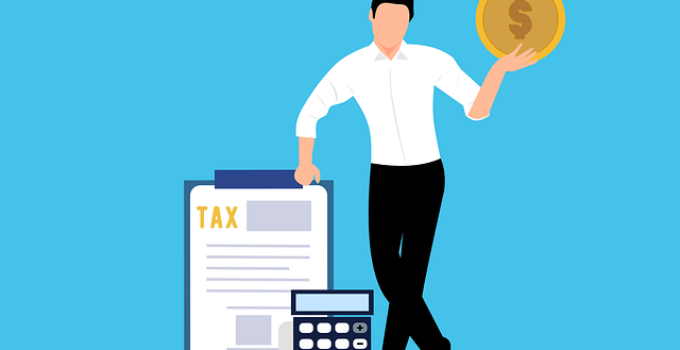Understanding UK VAT: A Comprehensive Guide
Introduction to UK VAT
Value Added Tax (VAT) is a consumption tax levied on most goods and services sold in the United Kingdom. As an indirect tax, VAT is collected by businesses on behalf of HM Revenue and Customs (HMRC) and ultimately borne by the end consumer. VAT is a vital source of revenue for the UK government, funding public services and contributing to the overall fiscal health of the nation.
Understanding how VAT works is essential for both consumers and businesses. The tax is applied at each stage of production and distribution. For instance, a manufacturer adds VAT to the sale of goods to a wholesaler, the wholesaler adds VAT when selling to a retailer, and the retailer charges VAT to the final consumer. Each business in the supply chain may reclaim the VAT it has paid on its own purchases, ensuring that the tax burden is shouldered by the consumer.
In the UK, there are three primary VAT rates: the standard rate, the reduced rate, and the zero rate. The standard rate of 20% applies to most goods and services, including electronics, household items, and professional services. The reduced rate of 5% applies to specific goods and services, such as energy-saving materials, children’s car seats, and home energy. Zero-rated items, which include certain foods, books, and children’s clothing, are taxable transactions that are still reported on VAT returns but attract a 0% rate, meaning no VAT is charged to the customer.
Businesses are required to register for VAT if their taxable turnover exceeds the VAT threshold, which is set at £85,000 as of fiscal year 2023. This registration is crucial, as it allows businesses to charge VAT on goods and services and reclaim any VAT they have paid on business-related purchases. Failing to register for VAT when required can lead to penalties and interest charges, underscoring the importance of compliance.
In summary, understanding VAT is indispensable for navigating the UK’s tax system. It influences pricing, profitability, and accounting practices. Whether you’re a business owner or a consumer, being well-informed about how VAT works and its different rates helps ensure compliance and informed financial decision-making.
VAT Registration Process
When conducting business in the United Kingdom, understanding the VAT registration process is essential for ensuring compliance with tax regulations. VAT, or Value Added Tax, is a consumption tax placed on goods and services, and its registration becomes obligatory once certain criteria are met. Typically, a business must register for VAT if its taxable turnover exceeds the annual threshold of £85,000. This threshold applies to the total value of everything sold that isn’t exempt from VAT.
There are various methods available for registering VAT, including online registration through the HMRC (Her Majesty’s Revenue and Customs) website, by post, or through an agent. Among these, the online registration process is the most efficient and widely used. Businesses can complete their VAT registration through the Government Gateway, which provides a step-by-step guide to filling out relevant forms and submitting the necessary information.
For successful VAT registration, certain documentation is required. Businesses must provide details such as their business address, bank account information, and records of past sales and business activities. Additionally, the registration process involves specifying the nature of the business and detailing any trading under different names.
The timeframe for VAT registration can vary. Upon submitting the required documentation, HMRC typically responds within 30 days, confirming the business’s VAT number and the effective registration date. It is critical to register on time as failing to adhere to registration deadlines can lead to significant penalties. These fines are calculated based on the amount of VAT owed and the duration of the delay in registration, thus emphasizing the importance of prompt compliance.
The online VAT registration process via the HMRC website is straightforward. Businesses must first create an account on the Government Gateway, then access the VAT registration service. The website prompts users through various sections, collecting necessary details and ensuring all required documentation is uploaded. Once the application is reviewed and approved, the business will receive their VAT registration certificate, which contains important information such as the VAT number and the effective date of VAT registration.
Adhering to these guidelines ensures that businesses can smoothly navigate the VAT registration process and avoid potential pitfalls associated with late registration. Being proactive and diligent in managing VAT obligations not only fosters compliance but also enhances the operational efficiency of any enterprise.
Filing and Paying VAT
Filing and paying VAT in the UK involves a structured process, essential for maintaining compliance with HMRC regulations. To begin with, VAT-registered businesses are required to prepare and submit VAT returns periodically, typically every quarter. These returns must detail the total sales and purchases, the amount of VAT owed, the amount of VAT reclaimable, and the overall VAT liability. This encompasses both sales invoices issued and purchase invoices received during the accounting period.
The most efficient way to file VAT returns is through the HMRC’s online system. Businesses must first register for VAT online services. Once registered, the system guides users through the submission process, ensuring that all necessary information is input correctly. A critical aspect of filing VAT returns is accuracy; any discrepancies can lead to penalties. Hence, cross-checking figures and maintaining up-to-date records is crucial.
When it comes to payment, HMRC offers multiple methods to accommodate businesses’ varied preferences. Payments can be made via Direct Debit, where the amount owing is automatically deducted from the business’s bank account; through online or telephone banking; by Bacs, CHAPS, or Faster Payments; or through a debit or corporate credit card on HMRC’s payment portal. Each method has its own processing time, so businesses must consider this to ensure payments are received by HMRC on time.
Deadlines for filing and payment are typically one month and seven days after the end of the VAT period. Missing these deadlines can lead to surcharges, penalties, and interest on the overdue amount, impacting the business’s financial health and compliance record. Therefore, it is important to set reminders and keep track of all due dates.
Maintaining accuracy and timeliness in the filing and payment process not only ensures compliance but also fosters a reliable relationship with HMRC, contributing to smoother business operations.
VAT Exemptions and Special Schemes
Understanding the various exemptions and special schemes available under UK VAT law is essential for businesses. VAT exemptions allow certain goods and services to be sold without charging VAT, while special schemes can simplify VAT compliance for businesses that qualify. These mechanisms are designed to alleviate administrative burdens and offer financial relief in specific business contexts.
Businesses may qualify for VAT exemptions in several situations. Common categories include health services, education, and certain financial services. For instance, medical treatment provided by a registered health professional is VAT exempt, as are training and education services provided by eligible institutions. To qualify, businesses must ensure their services fall strictly within the defined criteria outlined by HMRC. Failure to comply can result in penalties and back-taxes.
In addition to exemptions, the UK VAT system offers various special schemes aimed at different business needs. One well-known scheme is the Flat Rate Scheme, which simplifies VAT reporting for small businesses. Under this scheme, businesses calculate VAT based on a fixed percentage of their turnover, making it easier to manage finances without intricate record-keeping. Eligibility is typically limited to businesses with a turnover of £150,000 or less, exclusive of VAT.
Another significant scheme is the Margin Scheme for second-hand goods, art, and antiques. This scheme allows businesses to pay VAT on the difference between the purchase price and the selling price, rather than the full selling price. This can significantly reduce the VAT liability for dealers in second-hand goods and collectors, making it a vital tool for these sectors.
The VAT Retail Export Scheme, although recently discontinued for non-EU visitors, previously allowed such visitors to receive a VAT refund on goods purchased and taken home. Special schemes like these are continuously evaluated, and businesses must stay abreast of any changes to capitalize on available benefits.
For practical insights, consider a small retail business that opted for the Flat Rate Scheme. By doing so, it streamlined its VAT reporting and reduced its financial burden, allowing more focus on core business activities. Similarly, a used-car dealership utilizing the Margin Scheme could offer competitive prices by optimizing the VAT payable. Such examples highlight the importance of understanding and applying these exemptions and schemes to enhance operational efficiency and economic advantage.



